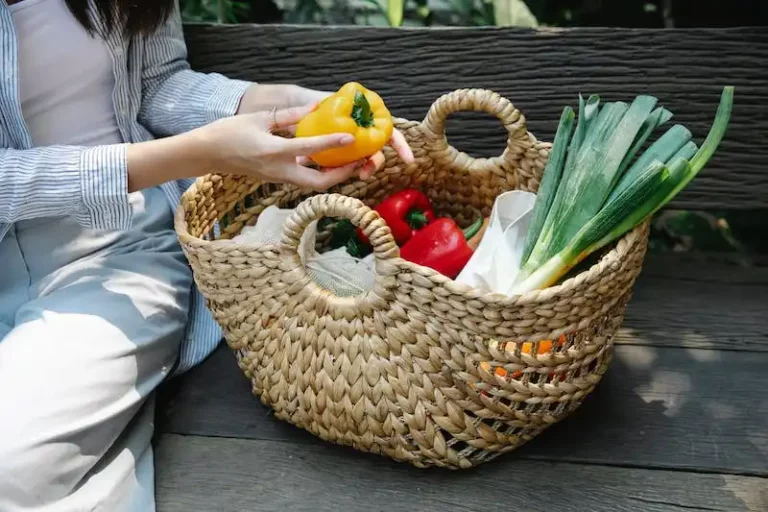The common name for the problem many tomato growers notice is called “catfacing.” It is a condition that can occur in some tomato varieties, causing the fruit to have unusual shapes and deformities. While this may look bad, the fruit is still edible and delicious, so there’s no need to treat it as a major problem.
When tomatoes are grown in certain conditions, such as cool weather or when there is a lack of pollination, catfacing can often occur. It is not an issue caused by any kind of disease or insect infestation, but rather a natural response of the tomato fruit.
One of the types of tomatoes that often exhibit catfacing is heirlooms. Heirlooms are unique varieties that have been passed down through generations, and they tend to have more unusual shapes and colors compared to the standard large-fruited tomatoes you may be familiar with.
If you’ve ever grown tomatoes before, you’ve probably encountered catfacing at least once. The deformities can range from small puckers and scars to large, misshapen fruits. While it may not look perfect, the flavor of the tomato is not affected and is still delicious.
So, if you notice catfacing in your tomato plants, don’t panic. It’s a common occurrence and doesn’t indicate any serious problem with your plants. If you want to prevent catfacing from happening, make sure your tomatoes are growing in optimal conditions and are properly pollinated. Bees play a crucial role in pollinating tomatoes, so it’s important to encourage their presence in your garden. Also, proper inspection and management of your tomato plants can help identify any potential issues before they become larger problems.
In conclusion, catfacing is a unique trait that often occurs in certain varieties of tomatoes, particularly heirlooms. While it may make the fruit look less attractive, it doesn’t affect the taste or quality. By understanding the causes and management techniques, you can keep your plants healthy and have a successful tomato harvest.
Tomato Catfacing: How To Identify, Treat, and Prevent It
Tomato catfacing is a disorder that can become a problem for gardeners growing heirloom and large-fruited tomato varieties. Catfacing occurs when tomatoes develop puckers, indentations, or scars on their surfaces. While the fruit is still delicious and safe to eat, the appearance may not be ideal.
If you thought catfacing was caused by cats, you’re not alone! Many gardeners get excited about their tomato harvests, only to discover catfacing on their precious fruits. However, cats have nothing to do with it.
The cause of catfacing is actually a pollen disorder. When the flowers are pollinated, the pollen may not reach all parts of the flower, resulting in incomplete fruit development. This is most likely to occur in cooler temperatures and in certain tomato varieties.
The symptoms of catfacing can vary, from single puckers to large, misshapen fruit. While catfacing does not impact the taste or quality of the tomatoes, it can make them less visually appealing. If you want to reduce the occurrence of catfacing, here’s what you can do:
- Choose varieties: Some tomato varieties are more prone to catfacing than others. By selecting varieties that are less likely to develop this disorder, you can prevent catfacing from becoming a problem.
- Improve pollination: Catfacing is caused by incomplete pollination, so improving pollination can help reduce its occurrence. You can do this by providing good growing conditions, such as ensuring proper soil moisture and avoiding extreme temperature fluctuations.
- Avoid herbicides: Certain herbicides can interfere with tomato flower development and increase the likelihood of catfacing. Avoid using herbicides near your tomato plants.
- Watch for megabloom: Megabloom is a condition that causes excessive flowers to form on a tomato plant. Although it may seem like a good thing, it can actually increase the chances of catfacing. If you notice excessive flowers, consider pruning them to reduce the risk of catfacing.
- Cross-pollination: Some gardeners have found that cross-pollination with certain types of flowers can reduce the occurrence of catfacing. While the scientific evidence is limited, it’s worth a try if you’re struggling with this issue.
In general, catfacing is more common in heirloom tomatoes compared to hybrid varieties. If you’re growing heirlooms, learning how to identify, treat, and prevent catfacing should be a part of your gardening life. By following the tips mentioned above, you can minimize the impact of catfacing on your tomato harvests and enjoy delicious and visually appealing tomatoes.
So, next time you see catfaced tomatoes in your garden, don’t be too disappointed. Instead, appreciate the interesting quirks of nature and the benefits these unique fruits bring to your garden.
What is Catfacing
Catfacing is a problem that can occur in some tomato varieties. It is characterized by puckers and deformations on the surface of the fruit, giving it a cat-like appearance. The term “catfacing” is used because the puckered areas resemble a cat’s face.
So, why does catfacing occur? There are several factors that can contribute to this issue. One main cause is temperature fluctuations during the early stages of fruit development. If the temperature drops below 50°F (10°C) or exceeds 85°F (29°C), the tomatoes are more likely to develop catfacing.
In addition to temperature fluctuations, catfacing can also be caused by certain varieties of tomatoes. Heirlooms, in particular, are more prone to catfacing compared to other types. This is because heirlooms often have unique and irregular shapes, making them more susceptible to deformities.
The appearance of catfacing may not look very good, but it doesn’t affect the taste or flavor of the tomatoes. The fruits are still perfectly edible and can be used for various recipes.
If you wish to prevent catfacing, there are a few tricks you can try. Planting certain varieties that are less prone to catfacing can help reduce the occurrence. Providing consistent moisture and avoiding over-fertilization can also help prevent catfacing.
It’s important to note that catfacing is not a disease and does not spread from plant to plant. It is simply a cosmetic issue that may affect the appearance of the fruit. However, some gardeners consider catfaced tomatoes to be a unique characteristic and even treasure them for their quirky appearance.
In conclusion, catfacing is a common problem in some tomato varieties. Although it may not look very appealing, catfaced tomatoes are still perfectly good to eat. By choosing the right varieties and providing optimal growing conditions, you can reduce the occurrence of catfacing and enjoy a bountiful harvest of delicious tomatoes.
Why is Catfacing a Problem
Catfacing is a disorder that can affect tomato plants and their fruits. It is most commonly seen in large-fruited heirloom varieties, although it can sometimes occur in other tomatoes as well.
The condition gets its name from the resemblance of the affected fruits to the face of a cat. The fruits have deep indentations and puckers, giving them an unusual and unappealing appearance.
While catfaced tomatoes are safe to eat, their irregular shape and texture can make them difficult to use in certain culinary applications. The disfigurement also impacts the overall yield of the plant, reducing the market value of crops.
There are several factors that can contribute to catfacing. The disorder is often caused by a fluctuation in temperature during the pollination process. If temperatures drop below 55 degrees Fahrenheit or rise above 90 degrees, the pollen may not properly germinate, leading to catfaced fruits.
Megablooms, which are large clusters of flowers that form at once, are also a contributing factor. When multiple flowers open at the same time, bees may have a difficult time distributing enough pollen to fully fertilize each flower, resulting in catfacing.
Some varieties of tomatoes are more prone to catfacing than others. Certain heirlooms, such as ‘Brandywine’ and ‘San Marzano’, are known to be particularly susceptible. However, even within a single variety, not all fruits will exhibit catfacing. This makes it necessary to inspect each fruit individually before harvest.
While catfacing does not affect the taste or flavor of the tomato, it does have an impact on the visual appeal and marketability of the fruit. To prevent catfacing, it is important to maintain stable environmental conditions during the pollination period. Keeping temperatures within the range of 65 to 85 degrees Fahrenheit and avoiding excessive temperature fluctuations can help reduce the risk of catfacing.
In conclusion, catfacing is a common problem in tomato-growing communities around the world. It can decrease the overall yield and market value of tomatoes, impacting farmers and consumers alike. By learning to identify the symptoms of catfacing and taking preventive measures, growers can minimize the occurrence of this disorder and ensure healthier and more visually appealing harvests.
What Types of Tomatoes Are Most Prone to Catfacing
When it comes to tomato plants and the conditions that can lead them to develop the catfacing disorder, there are certain types of tomatoes that are more prone to this issue than others. While all tomato plants are susceptible to catfacing to some degree, certain varieties are known to be more likely to develop the deformities.
Heirloom tomatoes, in particular, are often associated with catface symptoms. Heirlooms are known for their unique flavors and appearances, and they come in various types and colors. These tomatoes tend to have larger fruits, which can make them more vulnerable to catfacing. However, it’s important to note that not all heirlooms are prone to catfacing.
In addition to heirlooms, other large-fruited varieties can also be susceptible to catfacing. This includes beefsteak tomatoes, which are known for their juicy, meaty texture. The factors that cause catfacing are still not fully understood, but it is thought to be a result of temperature fluctuations during the pollination process.
During a tomato plant’s flowering cycle, the flowers need to be pollinated in order for fruit to develop. If the temperatures drop too low or rise too high during this critical time, the pollination process can be disrupted, leading to catfacing. Some gardeners have noticed that catfacing is more likely to occur when the plants are grown in stressful conditions, such as in pots or when they experience extreme weather.
One method that has been used to reduce the likelihood of catfacing is to provide consistent temperatures and protect the plant from any drastic fluctuations. This can be done by providing shade, using mulch, and ensuring proper watering. Additionally, some gardeners have had success by using methods such as “megabloom” – a technique where the tomato plant is given a boost of nutrients at specific times to encourage large, healthy fruit development.
While catfacing does not impact the taste or safety of the tomatoes, it can affect the appearance. Catfacing can cause the tomatoes to have puckers, grooves, or other deformities, giving them a unique and sometimes less appealing look. However, many gardeners find that despite the catfacing, the tomatoes are still delicious and worth harvesting.
If you wish to grow tomatoes that are less likely to be catfaced, there are certain varieties that are known to be more resistant. These include determinate varieties, as well as cherry tomatoes and paste tomatoes. These types of tomatoes have smaller fruits and are less likely to develop catface symptoms.
In conclusion, while catfacing is a disorder that can impact the appearance of tomatoes, it does not affect their taste or safety. Certain varieties, such as heirlooms and other large-fruited types, are more prone to developing catfacing, but there are management techniques and alternative varieties that can help reduce the likelihood of this issue.



